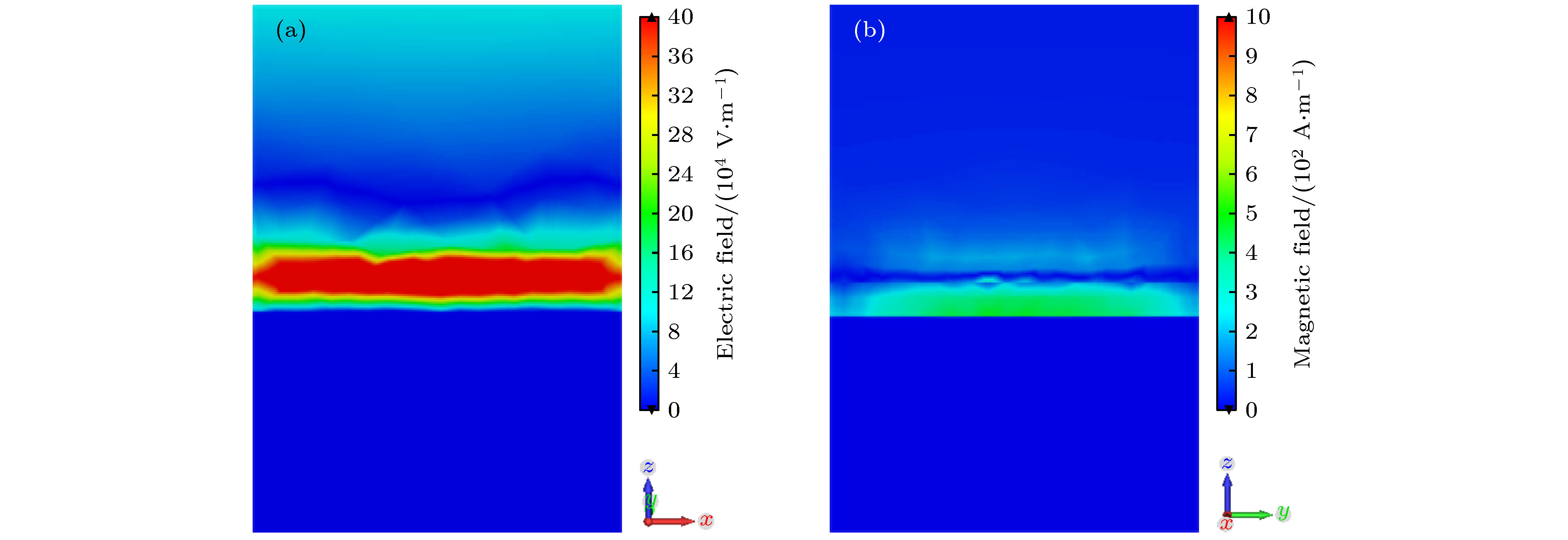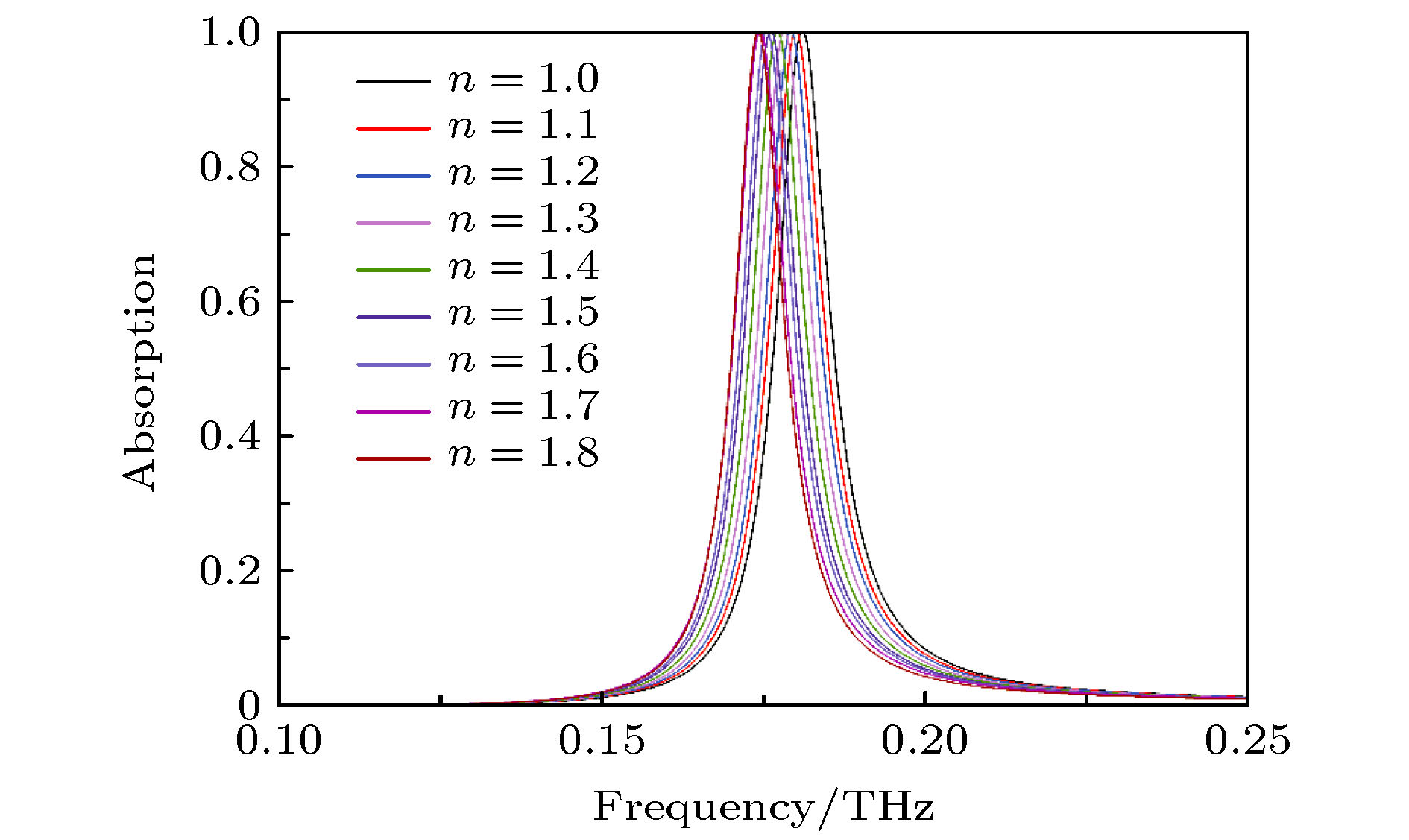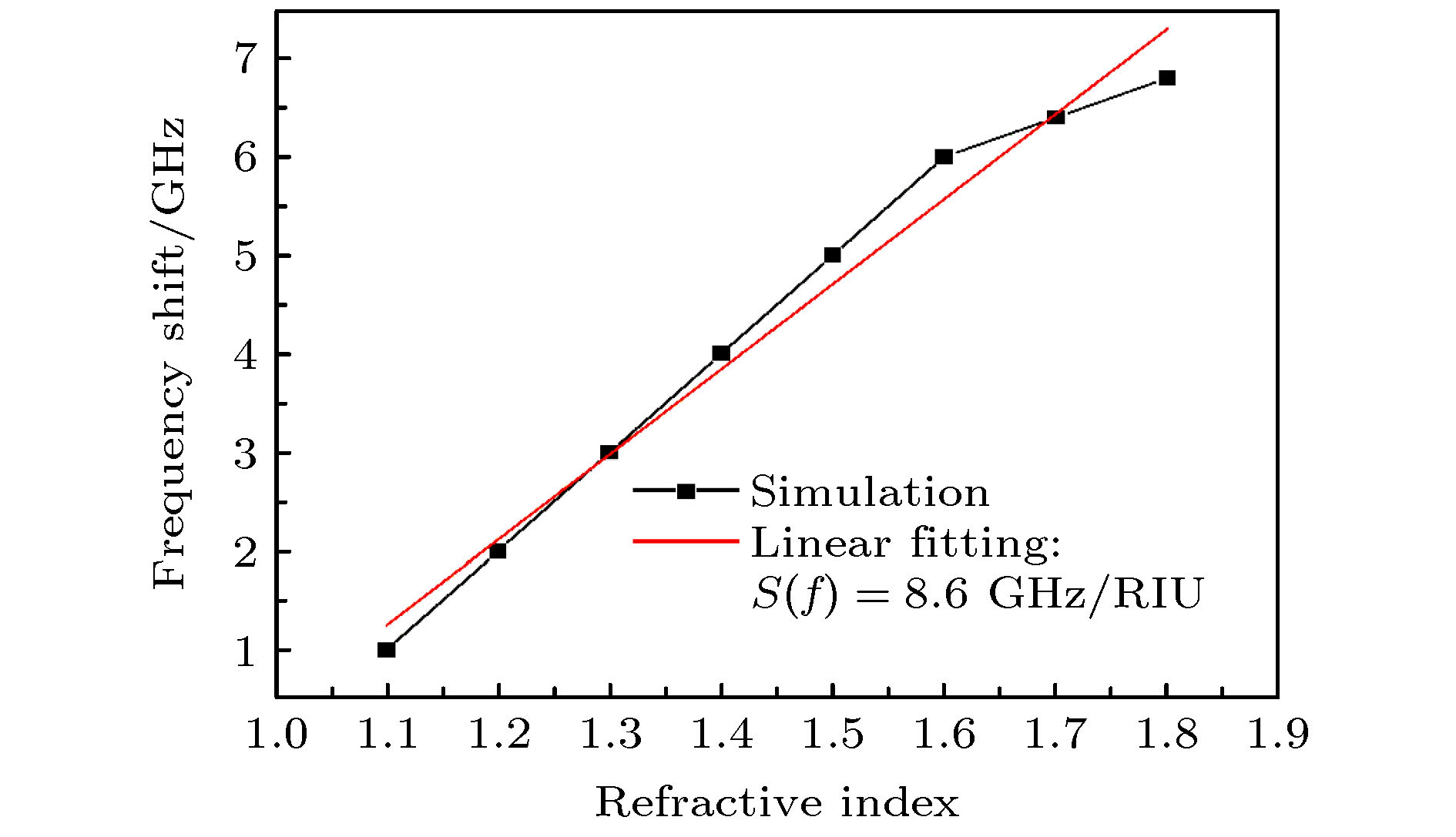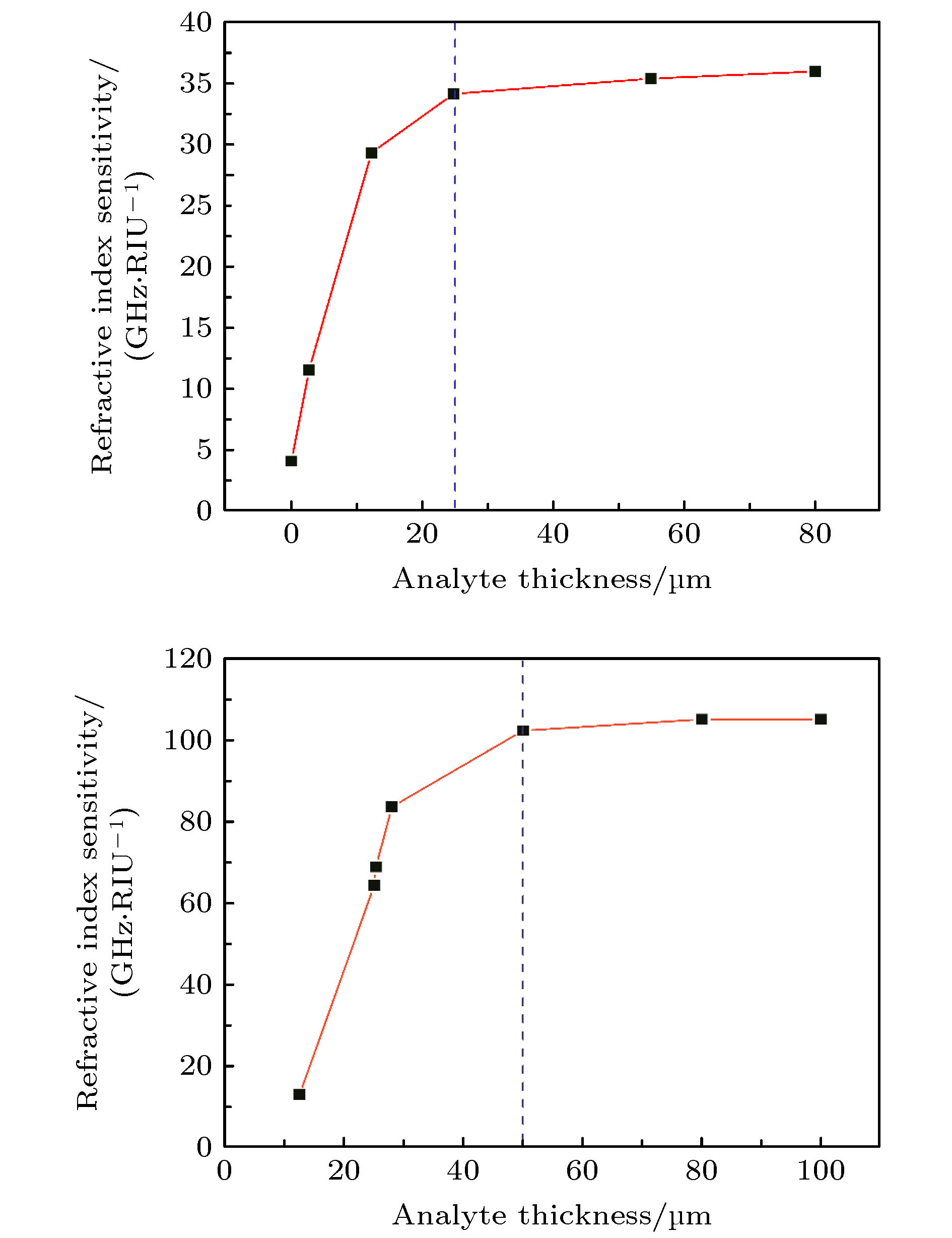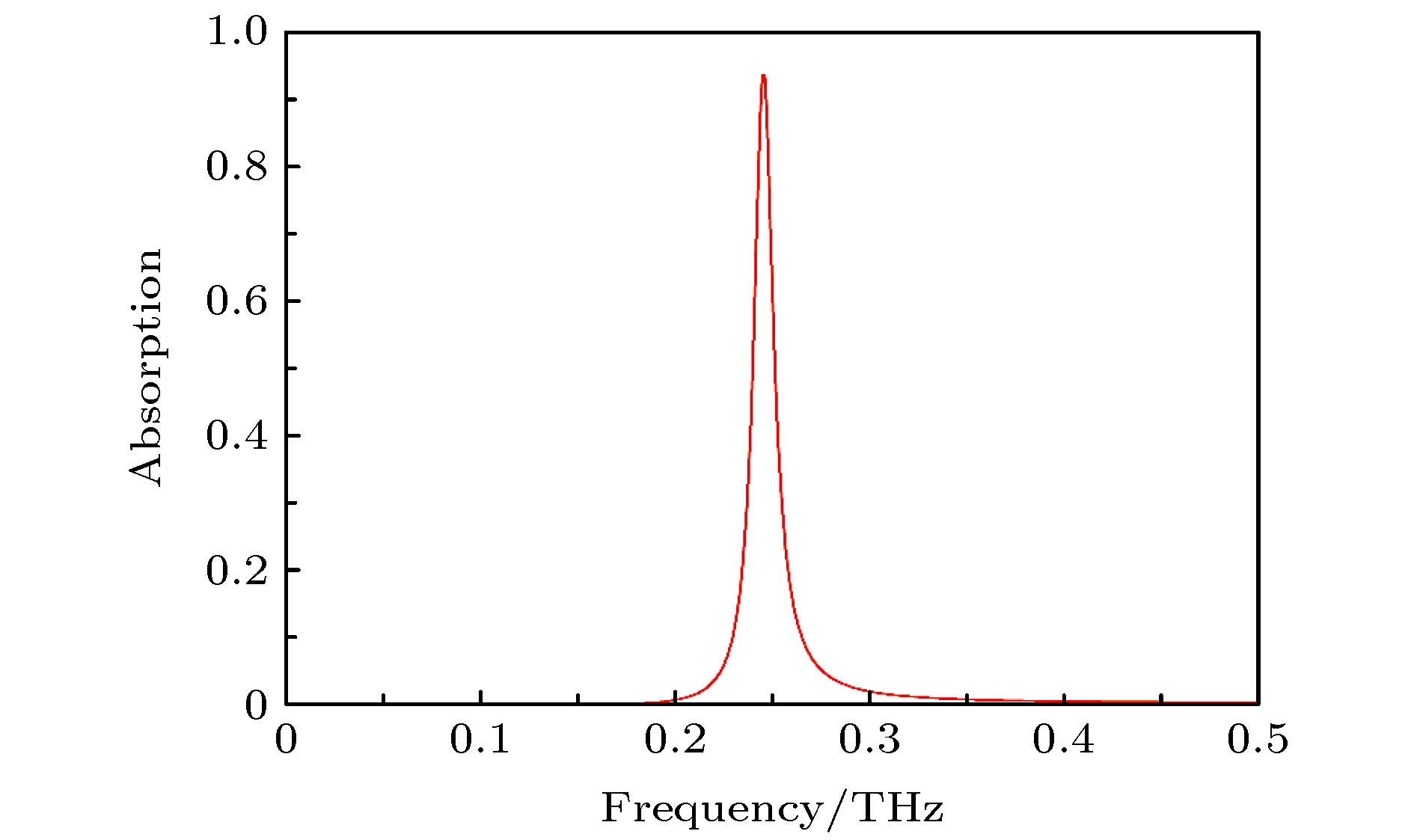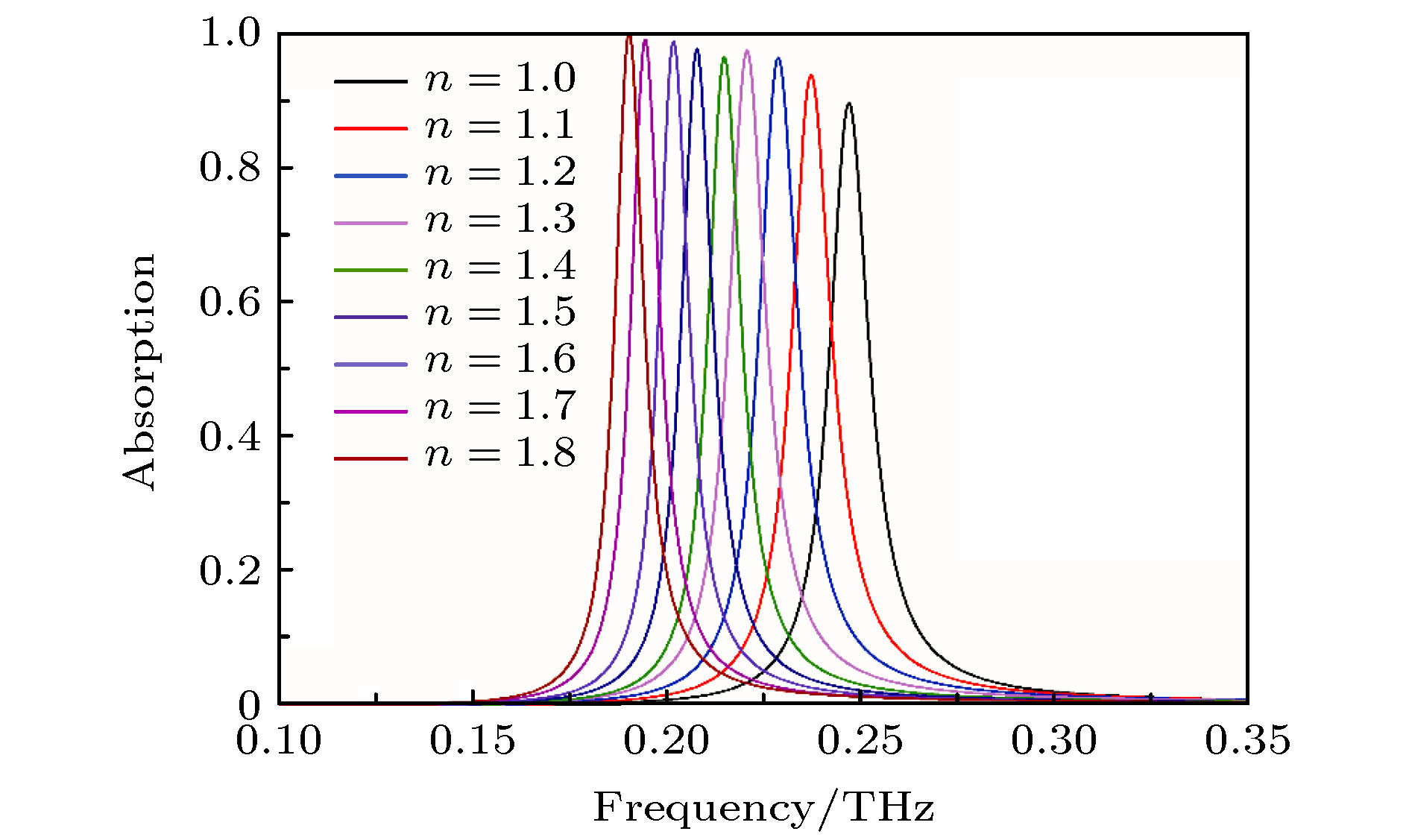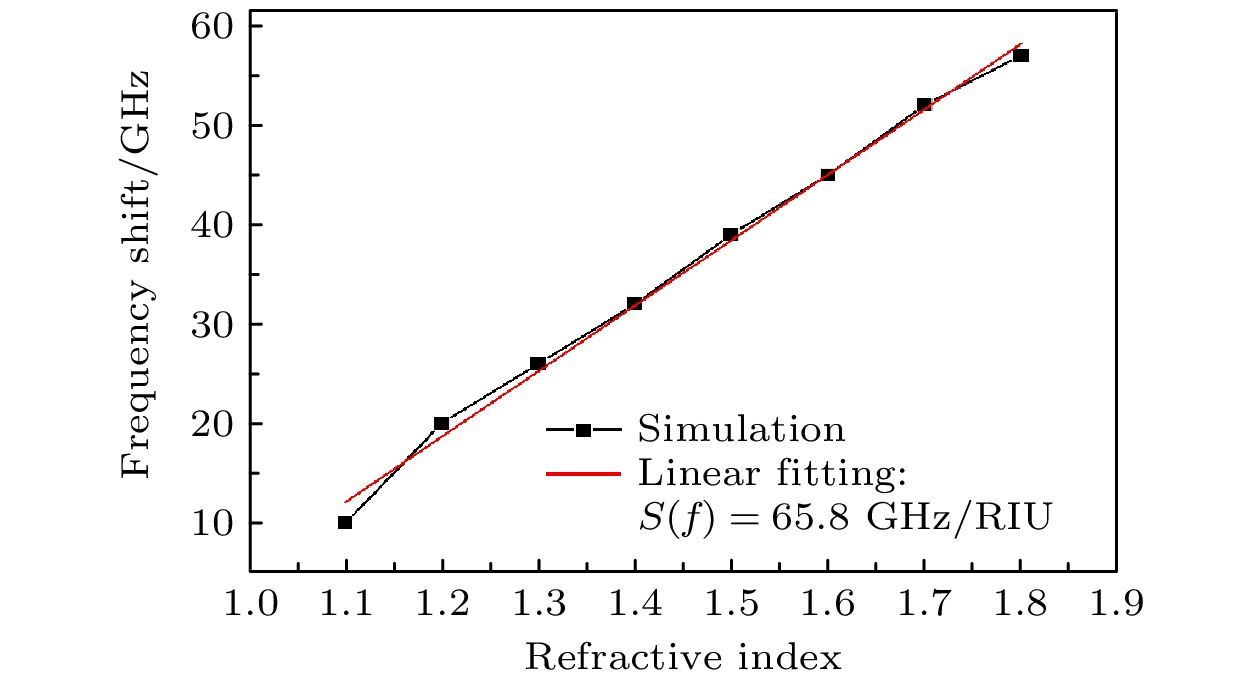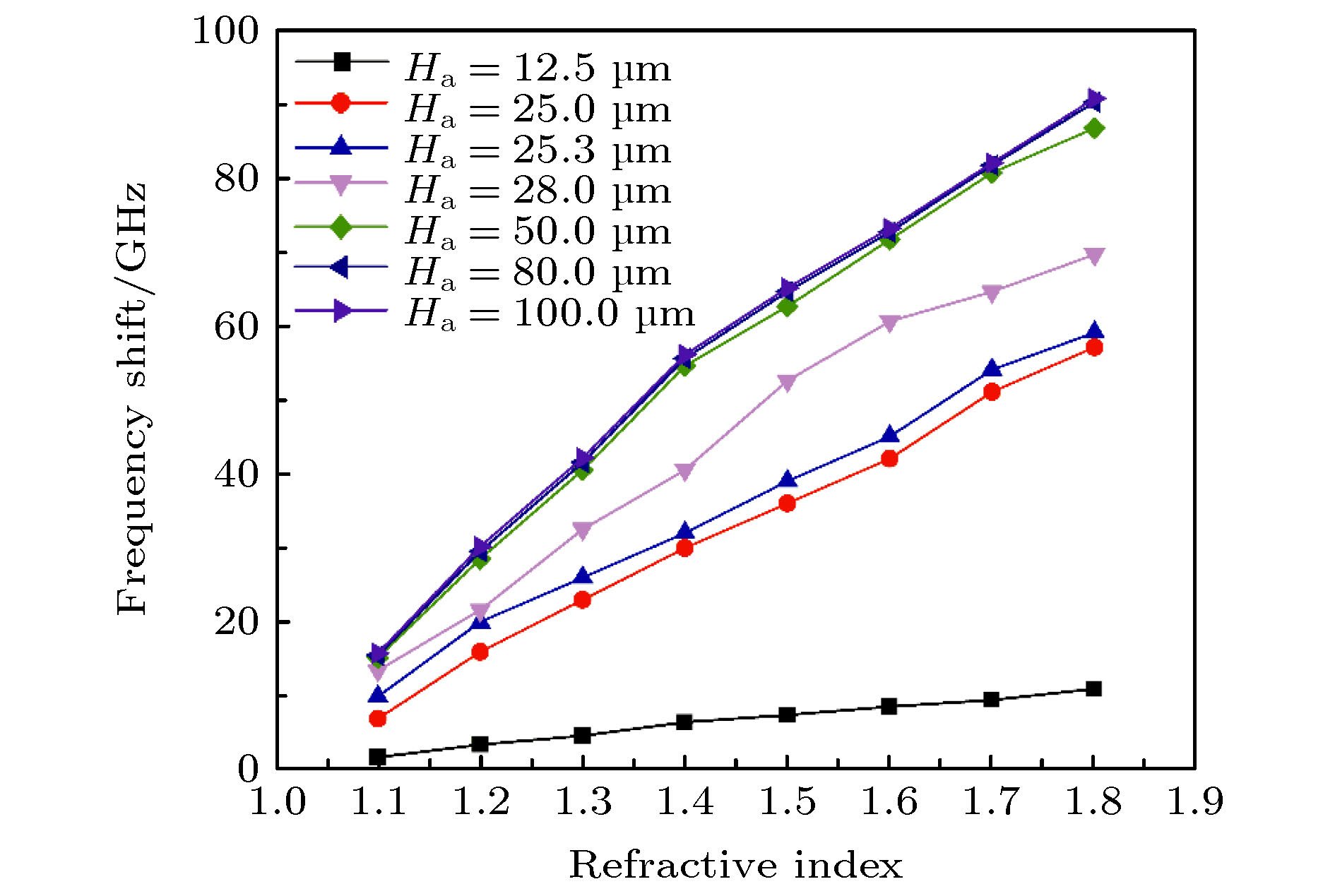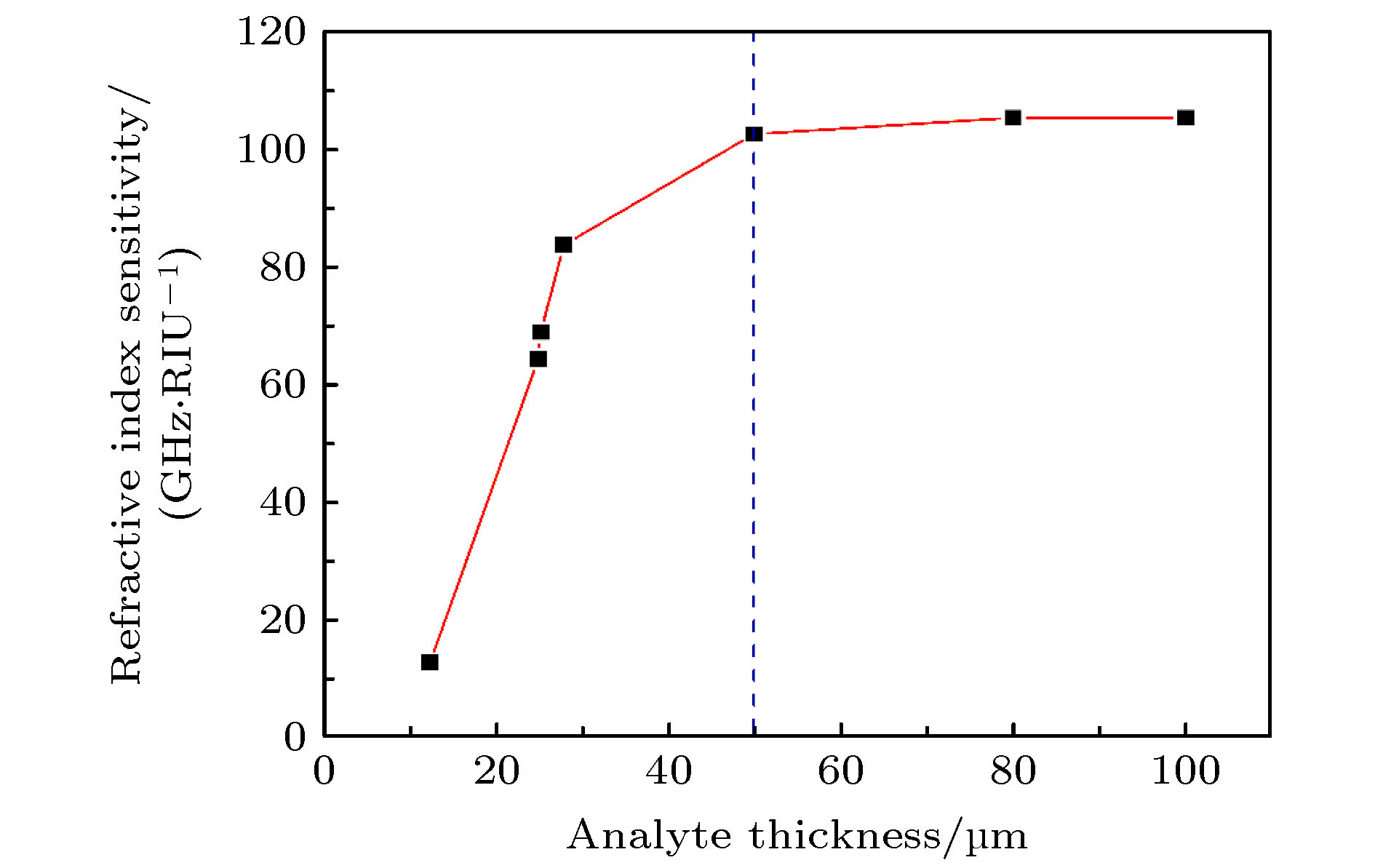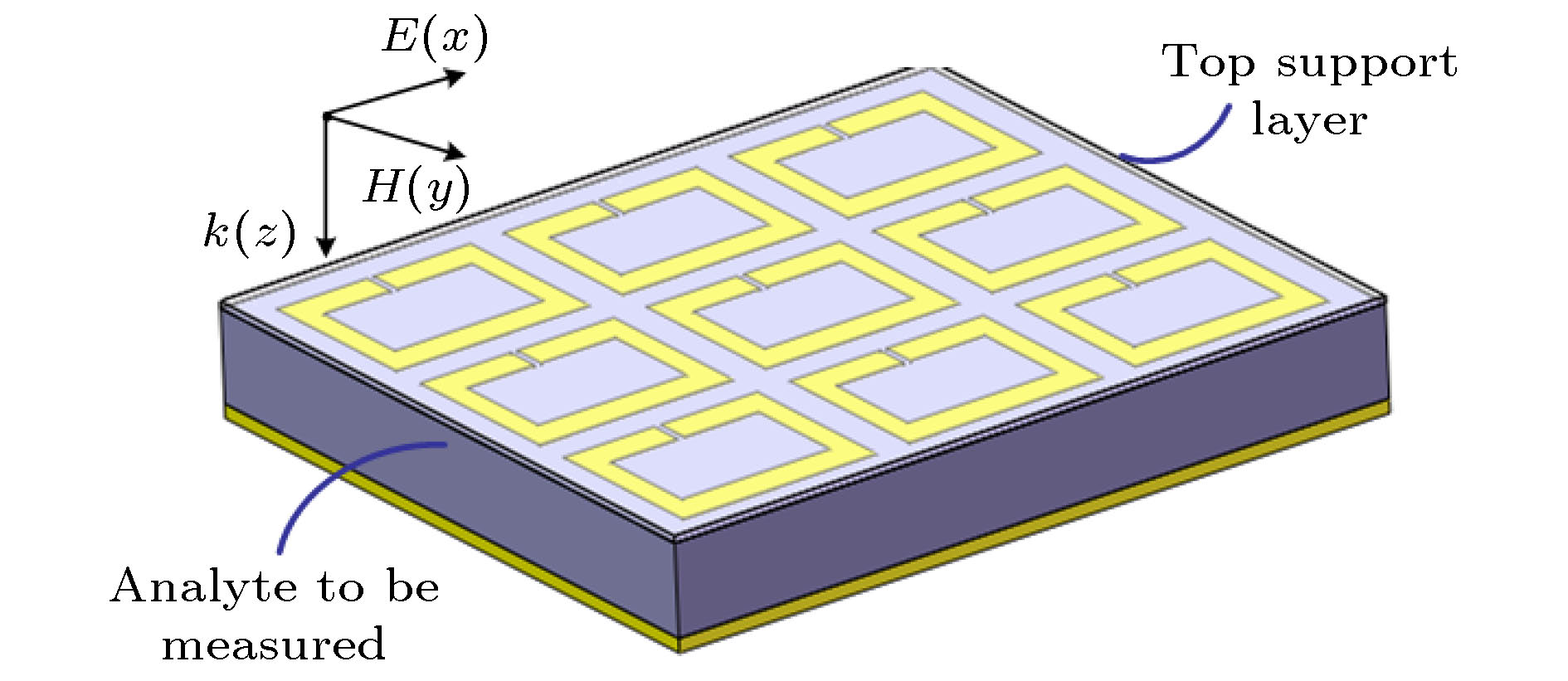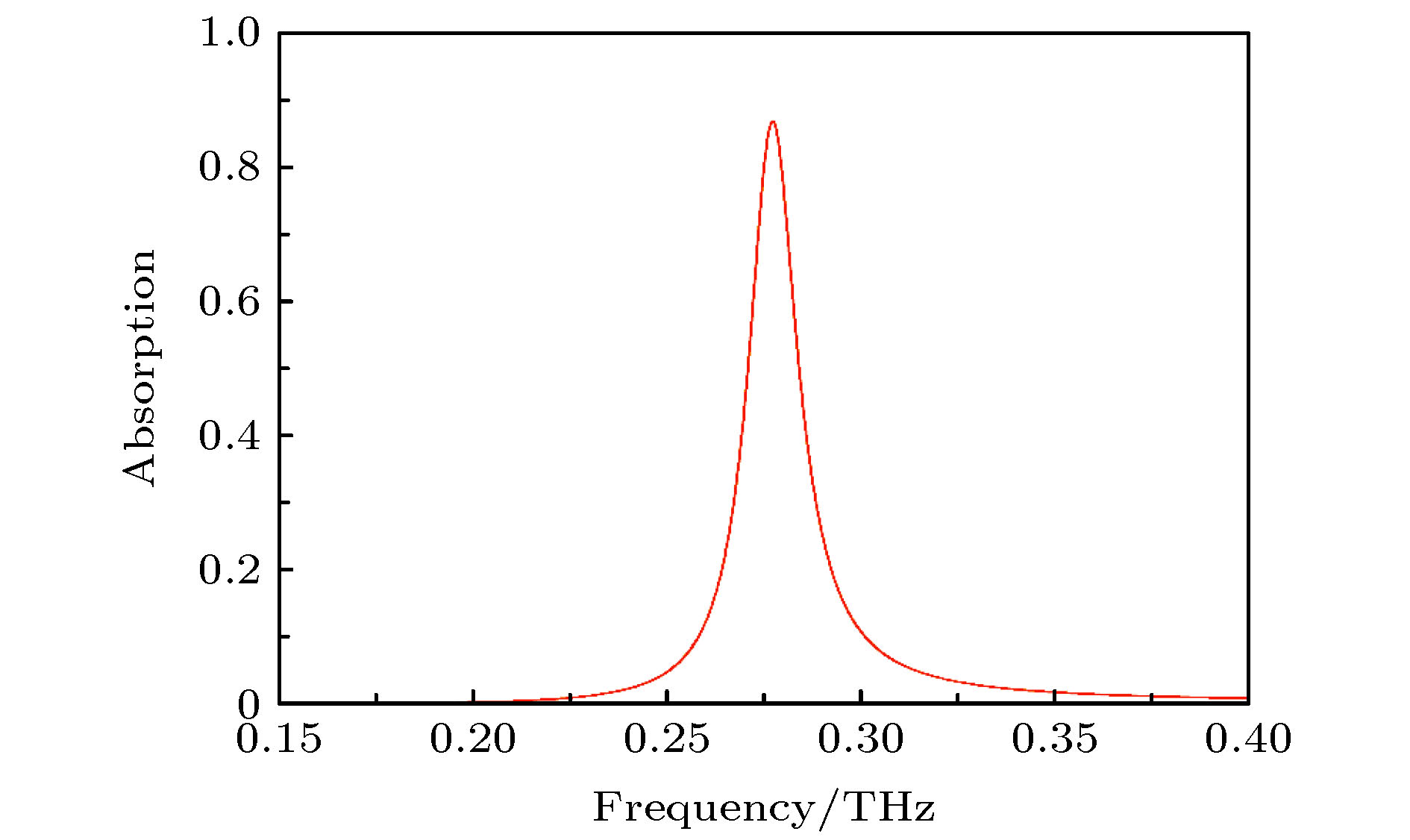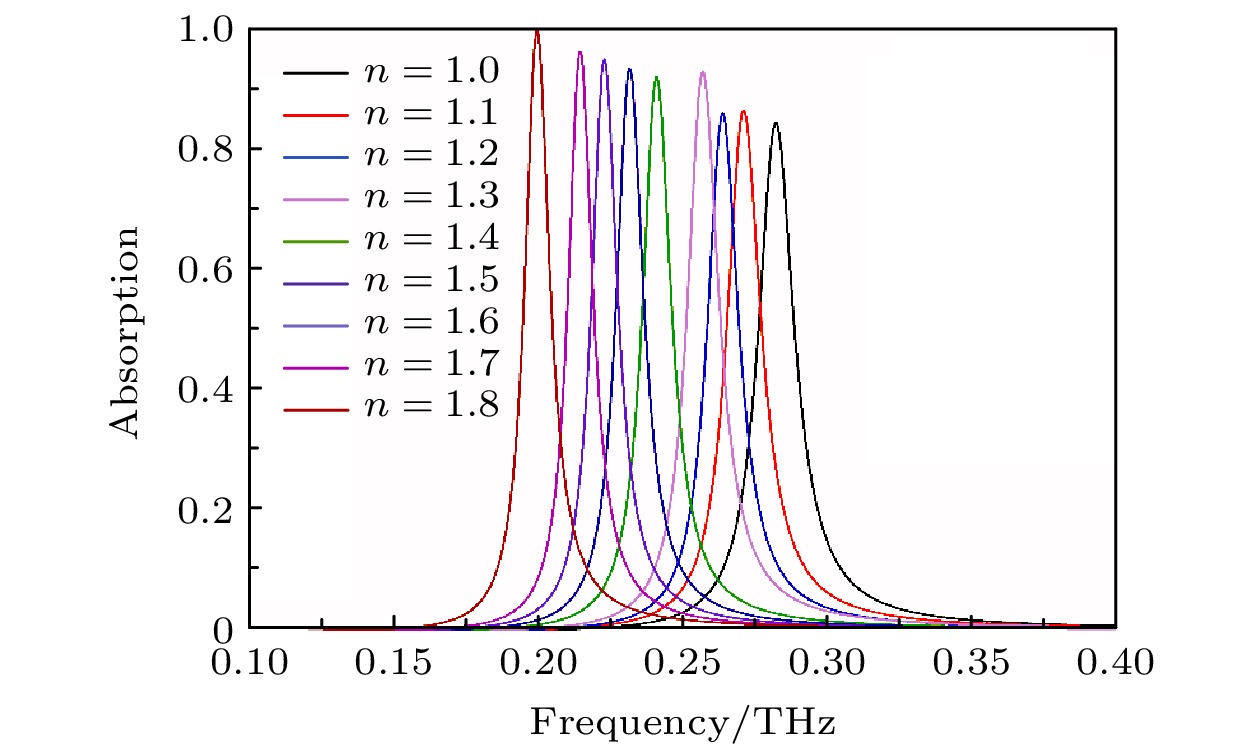-
太赫兹超材料吸波器作为一类重要的超材料功能器件, 除了可以实现对入射太赫兹波的完美吸收外, 还可以作为折射率传感器实现对周围环境信息变化的捕捉与监测. 通常从优化表面金属谐振单元结构和改变介质层材料和形态两个方面出发, 改善太赫兹超材料吸波器的传感特性. 为深入研究中间介质层对太赫兹超材料吸波器传感特性的影响, 本文基于金属开口谐振环阵列设计实现了具有连续介质层、非连续介质层和微腔结构的3款太赫兹超材料吸波器, 并对其传感特性与传感机理进行了深入研究. 结果表明, 为了提高太赫兹超材料吸波器的折射率灵敏度、最大探测范围等传感特性, 除了可以选用相对介电常数较小的材料作为中间介质层外, 还可以改变中间介质层的形态, 进而减小中间介质层对谐振场的束缚, 增强谐振场与被测分析物之间的耦合. 与传统的具有连续介质层的太赫兹超材料吸波器相比, 具有非连续介质层和微腔结构的超材料吸波器具有更优越的传感特性, 可应用于对待测分析物的高灵敏度、快速检测, 在未来的传感领域具有更加广阔的应用前景.
Terahertz metamaterial (THz MM) absorber, as an important type of MM functional device, can not only achieve perfect absorption of incident THz waves, but also act as a refractive index sensor to capture and monitor changes in the information about surrounding environment. Generally, the sensing characteristics of the THz MM absorber can be improved by optimizing the structure of the surface metal resonance unit and changing the material and shape of the dielectric layer. In order to further study the influence of the intermediate dielectric layer on the sensing characteristics of the THz MM absorber, in this paper we implement three THz MM absorbers with continuous dielectric layer, discontinuous dielectric layer and microcavity structure based on the metallic split-ring resonator array, and conduct in-depth study of their sensing characteristics and sensing mechanism. The THz MM absorber with continuous dielectric layer and metallic split-ring resonator array can be used as a refractive index sensor to realize the sensing detection of analytes coated on its surface with different refractive indexes. However, it can be seen from its corresponding refractive index frequency sensitivity and FOM value that the detection sensitivity of this sensor is limited, and its sensing performance still needs improving. The main reason is that most of the resonant electromagnetic (EM) field of the THz MM absorber is tightly bound in the intermediate dielectric layer, and only the fringe field extending to the surface of the MM absorber resonant unit array can interact with the analyte to be measured, and the intensity of this part of the field directly determines the sensitivity of the sensor. In order to further improve the refractive index frequency sensitivity of the THz MM absorber, reduce the restriction of the intermediate dielectric layer to the resonant EM field, and enhance the interaction between the resonant EM field and the analyte to be measured, a THz MM absorber with discontinuous dielectric layer is proposed and studied. Compared with the THz MM absorber with continuous dielectric layer, the THz MM absorber based on discontinuous dielectric layer can be used as a refractive index sensor to realize higher-sensitivity sensing and detection of the analyte coated on the surface. In order to further enhance the interaction between the resonant EM field and the analyte to be measured, and improve the refractive index frequency sensitivity of the THz MM absorber, a THz MM absorber with a microcavity structure is proposed. For this THz MM absorber, the analyte to be measured filled in the microcavity structure can serve as the intermediate dielectric layer of the THz MM absorber, and when the metallic split-ring resonator array is completely immersed in the analyte to be measured, the resonant EM field originally confined in the intermediate dielectric layer and the analyte to be measured completely overlap in space. Therefore, compared with the first two THz MM absorbers, THz MM absorber with a microcavity structure achieves the tightly and fully contacting the resonant EM field, thereby greatly improving its sensitivity as a sensor. The results show that in order to improve the sensing characteristics of the THz MM absorber, such as the refractive index sensitivity and the maximum detection range, in addition to using the materials with lower relatively permittivity as the intermediate dielectric layer, the morphology of the intermediate dielectric layer can be changed, thereby reducing the restraint of the intermediate dielectric layer on the resonant field and enhancing the coupling between the resonant field and the analyte to be measured. Compared with the conventional THz MM absorber with continuous dielectric layer, the MM absorber with discontinuous dielectric layer and microcavity structure have many superior sensing characteristics, and can be applied to the high-sensitivity and rapid detection of analytes to be measured, and has a broader application prospect in the future sensing field. -
Keywords:
- terahertz /
- metamaterial absorber /
- sensing
[1] Lee Y K 2012 太赫兹科学与技术原理 (北京: 国防工业出版社) 第1−30页
Lee Y K 2012 Principles of Terahertz Science and Technology (Beijing: National Defense Industry Press) pp1−30 (in Chinese)
[2] Zhang X C, Alexander S, Zhang Y 2017 Nat. Photonics 11 16
 Google Scholar
Google Scholar
[3] Zhang X C, Xu J Z 2010 Introduction to THz Wave Photonics (New York: Springer US) pp1−26
[4] 张活 2018 博士学位论文 (西安: 西安电子科技大学)
Zhang H 2018 Ph. D. Dissertation (Xi’an: Xidian University) (in Chinese)
[5] Wang J, Wang S, Singh R 2013 Chin. Opt. Lett. 11 011602
 Google Scholar
Google Scholar
[6] Wang X, Zhang B Z, Wang W J, Wang J L, Duan J P 2017 IEEE Photonics J. 9 4600512
 Google Scholar
Google Scholar
[7] 黄文媛 2013 硕士学位论文 (成都: 西南交通大学)
Huang W Y 2013 M. S. Dissertation (Chengdu: Southwest Jiaotong University) (in Chinese)
[8] Li S Y, Ai X C, Wu R H 2018 Opt. Commun. 428 251
 Google Scholar
Google Scholar
[9] 闫昕, 张兴坊, 梁兰菊, 姚建铨 2014 光谱学与光谱分析 2365
 Google Scholar
Google Scholar
Yan X, Zhang X F, Liang L J, Yao J Q 2014 Spectrosc. Spect. Anal. 2365
 Google Scholar
Google Scholar
[10] Chen T, Li S, Sun H 2012 Sensors 12 2742
 Google Scholar
Google Scholar
[11] 张玉萍, 李彤彤, 吕欢欢 2015 物理学报 64 117801
 Google Scholar
Google Scholar
Zhang Y P, Li T T, Lv H H 2015 Acta Phys. Sin. 64 117801
 Google Scholar
Google Scholar
[12] Wang X, Zhang B Z, Wang W J, Duan J P 2017 IEEE Photonics J. 9 4600213
 Google Scholar
Google Scholar
[13] 毛前军, 冯春早 2019 光学学报 39 0816001
 Google Scholar
Google Scholar
Mao Q J, Feng C Z 2019 Acta Opt. Sin. 39 0816001
 Google Scholar
Google Scholar
[14] Wang W, Yan F P, Tan S Y 2017 Photonics Res. 5 571
 Google Scholar
Google Scholar
[15] Yan X, Yang M S, Zhang Z 2019 Biosens. Bioelectron. 126 485
 Google Scholar
Google Scholar
[16] Srivastava Y K, Cong L Q, Singh R 2017 Appl. Phys. Lett. 111 201101
 Google Scholar
Google Scholar
[17] Ahmed S, Sungjoon L 2018 Biosens. Bioelectron. 117 398
 Google Scholar
Google Scholar
[18] Han B J, Han Z H, Qin J Y 2019 Talanta 192 1
 Google Scholar
Google Scholar
[19] Singh R, Al-Naib A I, Koch M 2010 Opt. Express 18 13044
 Google Scholar
Google Scholar
[20] Saraswati B, Kyoungsik K 2019 J. Phys. D: Appl. Phys. 52 275106
 Google Scholar
Google Scholar
[21] Li W Y, Su Y, Zhai X 2018 IEEE Photonic. Tech. Lett. 30 2068
 Google Scholar
Google Scholar
[22] Shen S M, Liu Y L, Liu W Q 2018 Mater. Res. Express 5 125804
 Google Scholar
Google Scholar
[23] Hu T, Strikwerda A C, Liu M 2010 Appl. Phys. Lett. 97 261909
 Google Scholar
Google Scholar
[24] Moritake Y, Tanaka T 2018 Opt. Express 26 3674
 Google Scholar
Google Scholar
[25] Brian B, Sepúlveda B, Alaverdyan Y, Lechuga L M, Käll M 2009 Opt. Express 17 2015
 Google Scholar
Google Scholar
[26] Wang W, Yan F P, Tan S Y 2020 Photonics Res. 8 519
 Google Scholar
Google Scholar
[27] Meng K, Park S J, Burnett A D 2019 Opt. Express 27 23164
 Google Scholar
Google Scholar
[28] Hu T, Chieffo L R, Brenckle M A, et al. 2016 Adv. Mater. 23 3197
 Google Scholar
Google Scholar
[29] Dmitriev A, Hägglund C, Chen S 2008 Nano Lett. 8 3893
 Google Scholar
Google Scholar
[30] Whitesides G M 2006 Nature 442 368
 Google Scholar
Google Scholar
[31] Zhou H, Hu D L, Yang C 2018 Sci. Rep. 8 14801
 Google Scholar
Google Scholar
[32] Hu X, Xu G Q, Wen L 2016 Laser Photonics Rev. 10 962
 Google Scholar
Google Scholar
[33] Janneh M, De Marcellis A, Palange E 2018 Opt. Commun. 416 152
 Google Scholar
Google Scholar
[34] Wang B X, Zhai X, Wang G Z 2015 Appl. Phys. 117 014504
 Google Scholar
Google Scholar
-
表 1 太赫兹超材料吸波器的参数对比
Table 1. Comparison of parameters of THz MM absorbers
太赫兹超材料吸波器的
吸收与传感特性参数具有不同介质层的太赫兹超材料吸波器 连续介质层 非连续介质层 微腔结构 谐振频率/THz 0.183 0.245 0.277 吸收率/% 99.97 93.30 86.60 谐振峰半高宽FWHM/GHz 9.3 13.0 15.0 品质因数Q 19.7 18.8 18.4 折射率灵敏度S/(GHz·RIU–1) 8.6 65.8 101.5 FOM值 0.92 5.06 6.77 -
[1] Lee Y K 2012 太赫兹科学与技术原理 (北京: 国防工业出版社) 第1−30页
Lee Y K 2012 Principles of Terahertz Science and Technology (Beijing: National Defense Industry Press) pp1−30 (in Chinese)
[2] Zhang X C, Alexander S, Zhang Y 2017 Nat. Photonics 11 16
 Google Scholar
Google Scholar
[3] Zhang X C, Xu J Z 2010 Introduction to THz Wave Photonics (New York: Springer US) pp1−26
[4] 张活 2018 博士学位论文 (西安: 西安电子科技大学)
Zhang H 2018 Ph. D. Dissertation (Xi’an: Xidian University) (in Chinese)
[5] Wang J, Wang S, Singh R 2013 Chin. Opt. Lett. 11 011602
 Google Scholar
Google Scholar
[6] Wang X, Zhang B Z, Wang W J, Wang J L, Duan J P 2017 IEEE Photonics J. 9 4600512
 Google Scholar
Google Scholar
[7] 黄文媛 2013 硕士学位论文 (成都: 西南交通大学)
Huang W Y 2013 M. S. Dissertation (Chengdu: Southwest Jiaotong University) (in Chinese)
[8] Li S Y, Ai X C, Wu R H 2018 Opt. Commun. 428 251
 Google Scholar
Google Scholar
[9] 闫昕, 张兴坊, 梁兰菊, 姚建铨 2014 光谱学与光谱分析 2365
 Google Scholar
Google Scholar
Yan X, Zhang X F, Liang L J, Yao J Q 2014 Spectrosc. Spect. Anal. 2365
 Google Scholar
Google Scholar
[10] Chen T, Li S, Sun H 2012 Sensors 12 2742
 Google Scholar
Google Scholar
[11] 张玉萍, 李彤彤, 吕欢欢 2015 物理学报 64 117801
 Google Scholar
Google Scholar
Zhang Y P, Li T T, Lv H H 2015 Acta Phys. Sin. 64 117801
 Google Scholar
Google Scholar
[12] Wang X, Zhang B Z, Wang W J, Duan J P 2017 IEEE Photonics J. 9 4600213
 Google Scholar
Google Scholar
[13] 毛前军, 冯春早 2019 光学学报 39 0816001
 Google Scholar
Google Scholar
Mao Q J, Feng C Z 2019 Acta Opt. Sin. 39 0816001
 Google Scholar
Google Scholar
[14] Wang W, Yan F P, Tan S Y 2017 Photonics Res. 5 571
 Google Scholar
Google Scholar
[15] Yan X, Yang M S, Zhang Z 2019 Biosens. Bioelectron. 126 485
 Google Scholar
Google Scholar
[16] Srivastava Y K, Cong L Q, Singh R 2017 Appl. Phys. Lett. 111 201101
 Google Scholar
Google Scholar
[17] Ahmed S, Sungjoon L 2018 Biosens. Bioelectron. 117 398
 Google Scholar
Google Scholar
[18] Han B J, Han Z H, Qin J Y 2019 Talanta 192 1
 Google Scholar
Google Scholar
[19] Singh R, Al-Naib A I, Koch M 2010 Opt. Express 18 13044
 Google Scholar
Google Scholar
[20] Saraswati B, Kyoungsik K 2019 J. Phys. D: Appl. Phys. 52 275106
 Google Scholar
Google Scholar
[21] Li W Y, Su Y, Zhai X 2018 IEEE Photonic. Tech. Lett. 30 2068
 Google Scholar
Google Scholar
[22] Shen S M, Liu Y L, Liu W Q 2018 Mater. Res. Express 5 125804
 Google Scholar
Google Scholar
[23] Hu T, Strikwerda A C, Liu M 2010 Appl. Phys. Lett. 97 261909
 Google Scholar
Google Scholar
[24] Moritake Y, Tanaka T 2018 Opt. Express 26 3674
 Google Scholar
Google Scholar
[25] Brian B, Sepúlveda B, Alaverdyan Y, Lechuga L M, Käll M 2009 Opt. Express 17 2015
 Google Scholar
Google Scholar
[26] Wang W, Yan F P, Tan S Y 2020 Photonics Res. 8 519
 Google Scholar
Google Scholar
[27] Meng K, Park S J, Burnett A D 2019 Opt. Express 27 23164
 Google Scholar
Google Scholar
[28] Hu T, Chieffo L R, Brenckle M A, et al. 2016 Adv. Mater. 23 3197
 Google Scholar
Google Scholar
[29] Dmitriev A, Hägglund C, Chen S 2008 Nano Lett. 8 3893
 Google Scholar
Google Scholar
[30] Whitesides G M 2006 Nature 442 368
 Google Scholar
Google Scholar
[31] Zhou H, Hu D L, Yang C 2018 Sci. Rep. 8 14801
 Google Scholar
Google Scholar
[32] Hu X, Xu G Q, Wen L 2016 Laser Photonics Rev. 10 962
 Google Scholar
Google Scholar
[33] Janneh M, De Marcellis A, Palange E 2018 Opt. Commun. 416 152
 Google Scholar
Google Scholar
[34] Wang B X, Zhai X, Wang G Z 2015 Appl. Phys. 117 014504
 Google Scholar
Google Scholar
计量
- 文章访问数: 13061
- PDF下载量: 345
- 被引次数: 0













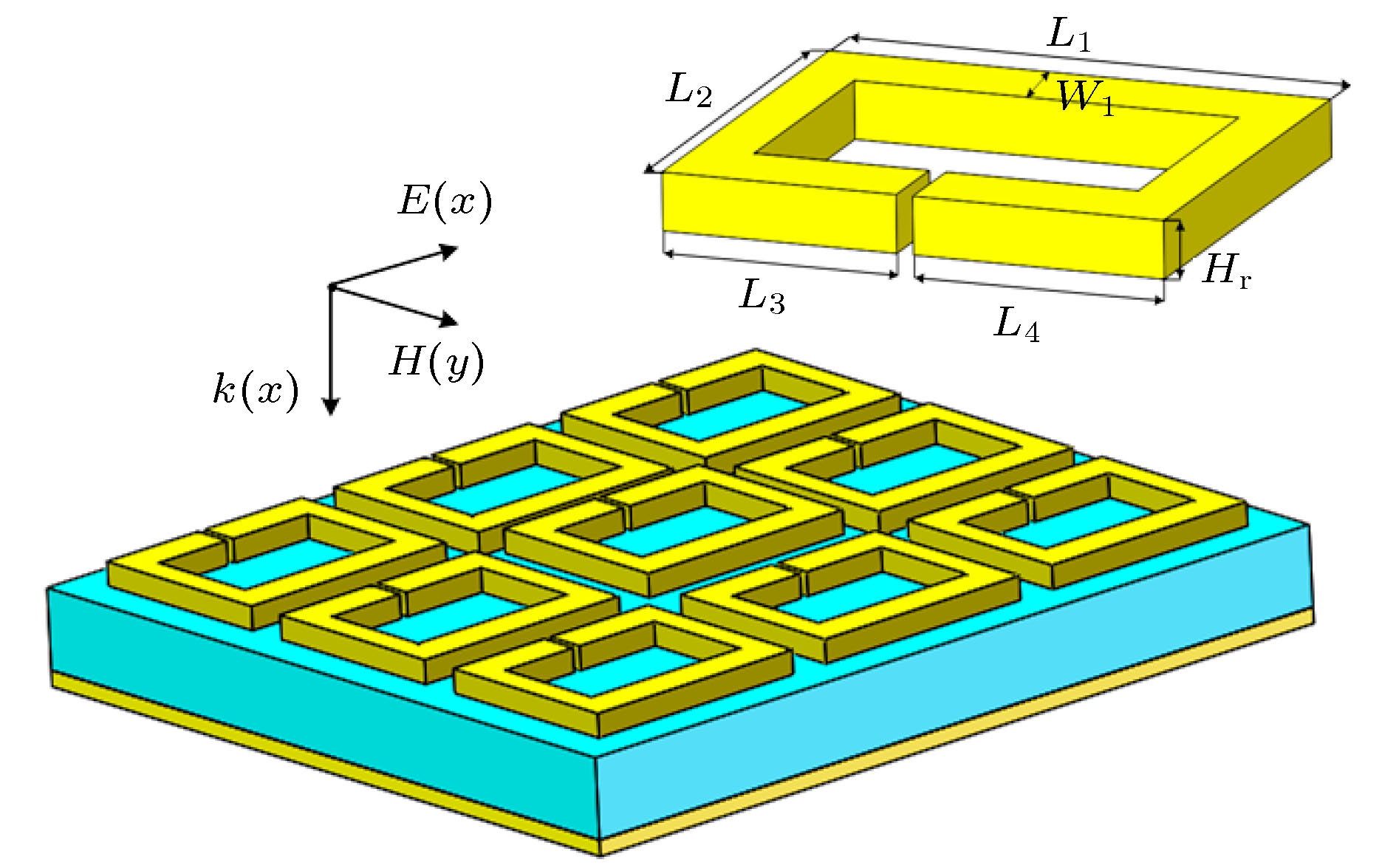
 下载:
下载:


